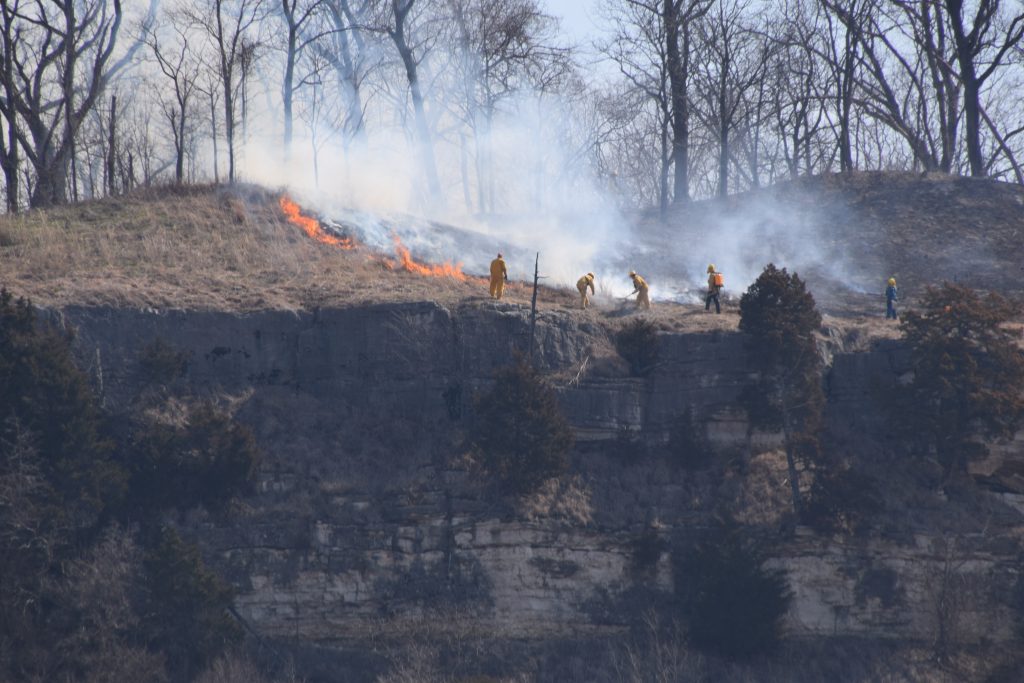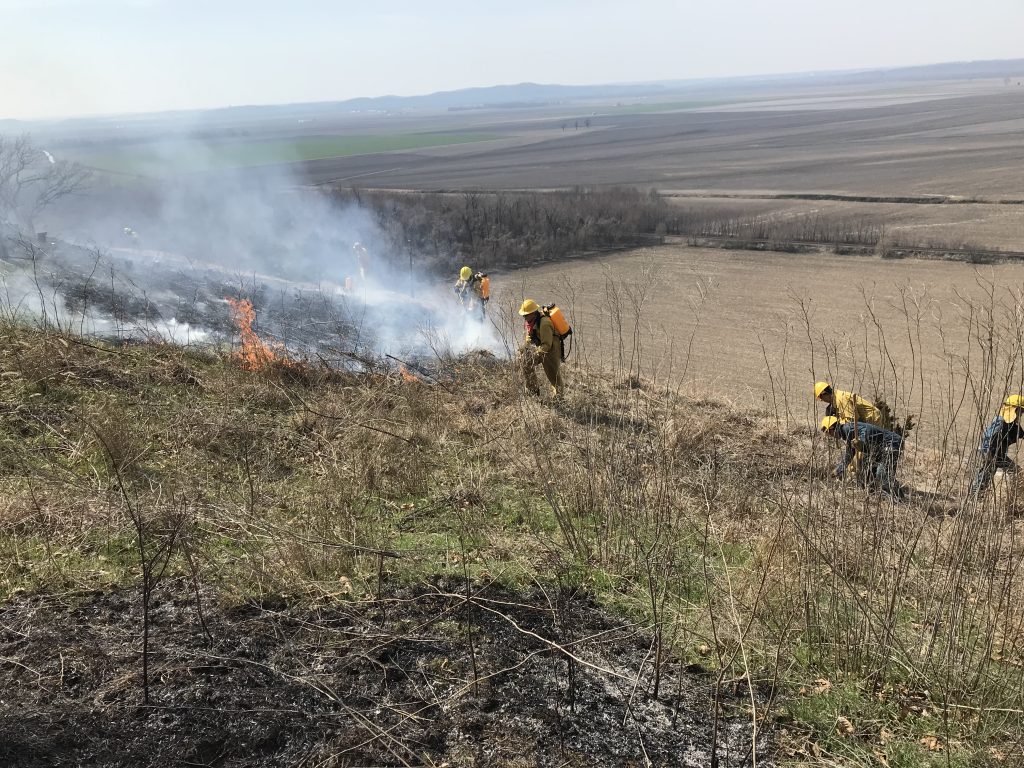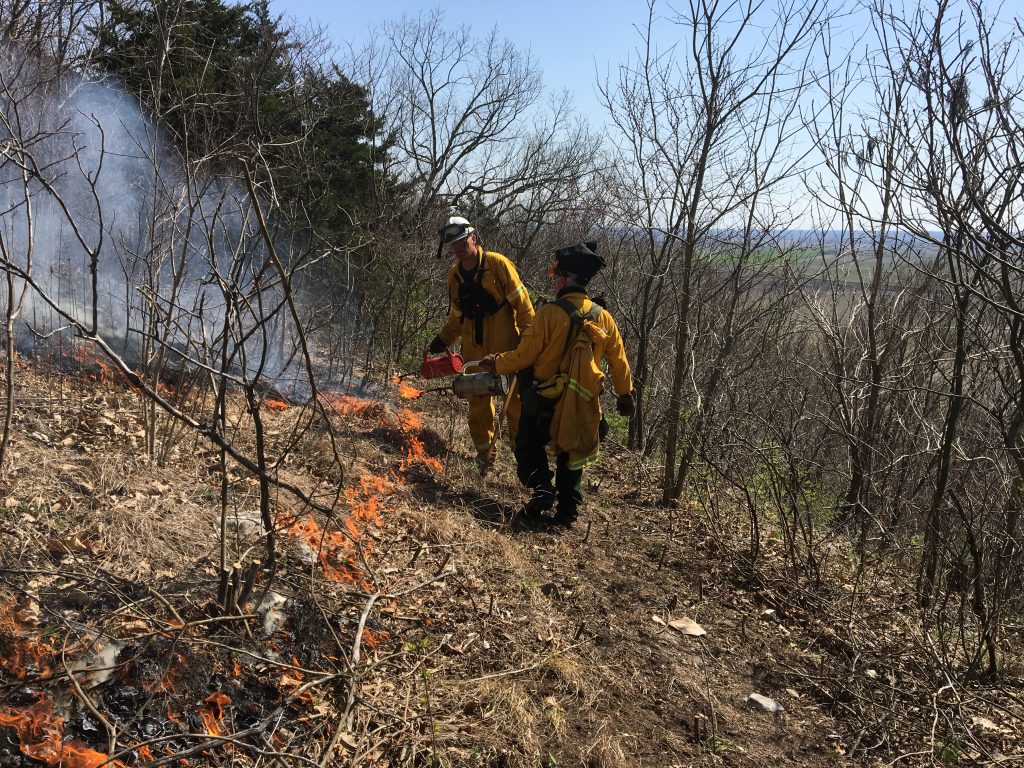Benefits of Prescribed Burning
With prescribed burn season drawing to a close, now is a good time to point out the benefits of this stewardship practice.

Prescribed burning is a key land management tool that is used to maintain native and planted prairies, oak-hickory forests, glades and barrens. Fire was once a common event and natural occurrence in the prairies and forests of the Midwest. Lightning was the source of naturally occurring fires, but Native Americans also used fire to clear undergrowth from forests and stimulate the growth of prairie grasses by removing thatch. Not surprisingly, native Midwestern plants depend on periodic fire to rejuvenate growth and ensure long-term survival. Some native plants actually require fire to release their seeds for reproduction. It also can help to restore nutrients that will enhance future plant growth. Modern tendencies to suppress fire allow woody and weedy invasive species to overtake our native grasses, forbs and forests thus reducing plant and animal diversity.

Forest managers use prescribed burns to help return the woods to the historic oak-hickory composition, using fire to eliminate nuisance native trees such as Rough-leaf dogwood, Sassafras and Pawpaw. In our area, Amur honeysuckle is overtaking our woodlands and preventing the regeneration of oaks and hickories. A good, hot fire will top kill these invasive woodies, but fire follow-up is necessary to herbicide treat the new growth that comes up from the roots. Young oaks and hickories sprout back quickly after prescribed fire, thus increasing the amount of ecologically valuable oaks and hickories in Illinois forests.
Another frequent use of prescribed fire is to reduce fuel accumulation that could lead to intense and potentially dangerous wildfires. Periodic removal of dense small trees, brush, vines and leaves reduces the threat of severe fires that kill valuable living trees or pose a risk to personal property and human safety.

When properly utilized, prescribed fire generally does not pose a significant threat to wildlife and is an economically viable tool for increasing the quality and quantity of suitable habitat for wildlife. Prescribed fire increases the production of wildlife food such as fruit, nuts, legumes, grasses and forbs. Fire can also increase the nutritional value of this food by increasing nutrient availability.
If you are interested in a prescribed burn on your property, there are several certified burn professionals in our area that can be contacted to write a burn plan and obtain Illinois Environmental Protection Agency open burning permits.
CLIFFTOP, a local nonprofit organization, is focused on preserving and protecting area bluff lands.
A version of this article appeared in the April 14, 2021 edition of the Republic-Times.
©2021 all content rights reserved Clifftop NFP
Comments are currently closed.
